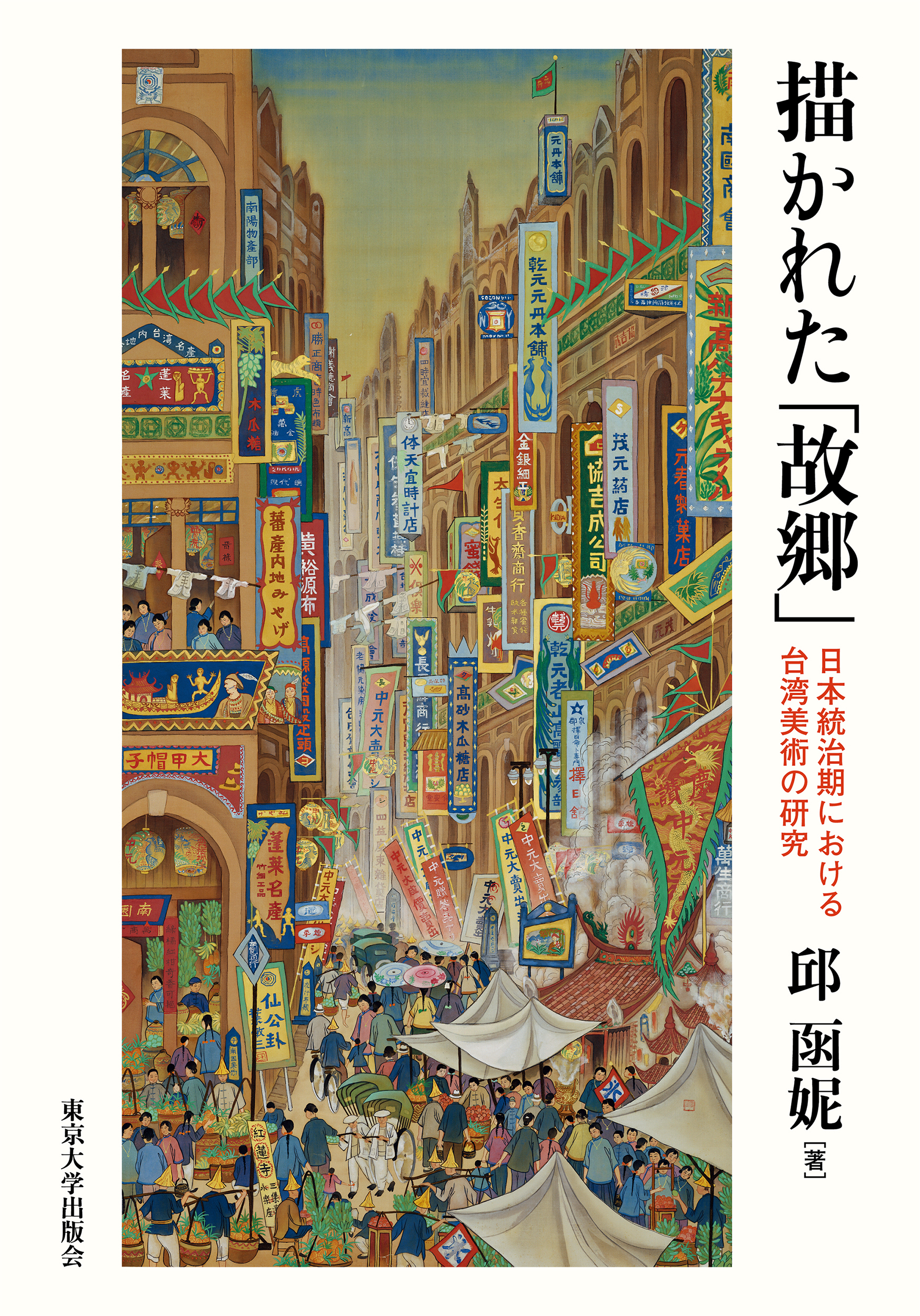
Title
Egakareta “Kokyou” (Taiwanese Art in the Japanese Colonial Period - Depicting the "Homeland", Its Local Color and Identity)
Size
352 pages, A5 format
Language
Japanese
Released
March 28, 2023
ISBN
978-4-13-086065-9
Published by
University of Tokyo Press
Book Info
See Book Availability at Library
Japanese Page
This book examines the institutions and concepts of “art” introduced by the Empire of Japan in Taiwan under its rule (1895 – 1945). Through this examination, the book considers the establishment and representations of the concept of “Taiwan” in “art” from the aspects of institutions, concepts, discourses and artworks. In analyzing “Taiwanese” representations, the book also introduces the “homeland” as a perspective, and examines the question of the identity of artists in Taiwan as “Taiwanese” people.
The first half of the book provides analysis primarily from an institutional historical perspective. The framework of “Taiwanese art” can be said to be formed in the process of transplanting the concept and institutions of “art” to Taiwan under Japanese colonial rule. Especially in the circle of artists during the Japanese colonial period, which had its nucleus in the Taiwan Fine Arts Exhibition (Taiten) (1927-36), “local color,” the expression of which artists sought to create unique “Taiwanese art,” was the central concept. This book examines the question of “local color” in art exhibitions in a colonized land from a perspective different from previous studies. In short, I believe that the concept of “local color” in Taiten was distinctiveness (“localness”) that artists expressed to contrast against Western modernity in a time when Western modernity was considered to comprise universal values. The philosophy of expressing “local color” in Taiten also included a call to create new native forms of art. Exhibitions sought to produce new native arts in the form of “Japanese-Taiwan integration,” rooted in the land of Taiwan, based on the artists’ recognition of Taiwan as their homeland. This artistic direction can be considered a part of assimilation policy by the colonizers. However, for the people of Taiwan, the pursuit of Taiwan’s uniqueness consolidated their sense of community.
Using native features as the subject matter of artworks did not begin with Taiten. Early on, Taiwanese artists had recognized Taiwan as their “homeland,” and created art with this “homeland” as the subject. The latter half of the book examines artworks by artists such as Huang Tu-Shui (1895 – 1930), Chen Cheng-Po (1895 – 1947), Chen Chih-Chi (1906 – 1931), and Kuo Hsueh-Hu (1908 – 2012) who created works with such consciousness. I consider the question of how the concept of “Taiwan” was formed and the question of the Taiwanese people’s latent identity through analysis of these artists’ works shown in Japan’s Imperial Art Exhibition (Teiten) and Taiten. I proceed with my analysis from the perspective of colonial modernity. I believe that in Taiwan, colonial youths’ formation of their own sense of community contributed to the process of the creation of these works. This awareness was formed amid the experience of resisting ethnic discrimination in colonial rule while actively incorporating the modern civilization introduced by the colonizers.
A consciousness of “homeland” that connects Taiwanese artists’ identity and “Taiwan” thus emerged in the space between the pursuit of modernity and the expression of local color. However, in these works by artists with different standpoints and attitudes, one can perceive both complexity in expressions of “Taiwanese” themes and multilayered meanings.
(Written by: CHIU Hanni / March 31, 2023)
Related Info
The 3rd UTokyo Jiritsu Award for Early Career Academics (The University of Tokyo 2022)
https://www.u-tokyo.ac.jp/ja/research/systems-data/n03_kankojosei.html
The 34th Ringa Art Encouragement Prize (Ringa Bijutu Shoureikikin Nov 2023)
http://ringa-bijutukikin.jp/prize.html



